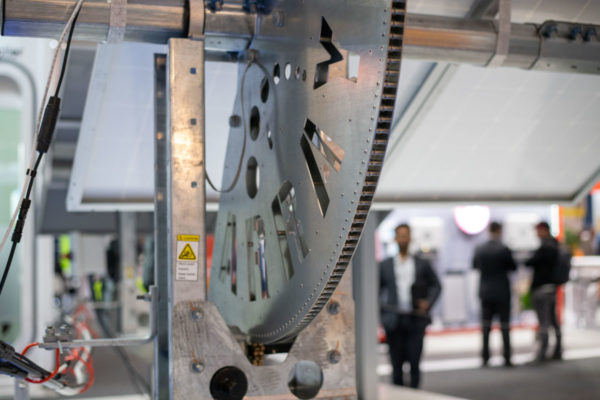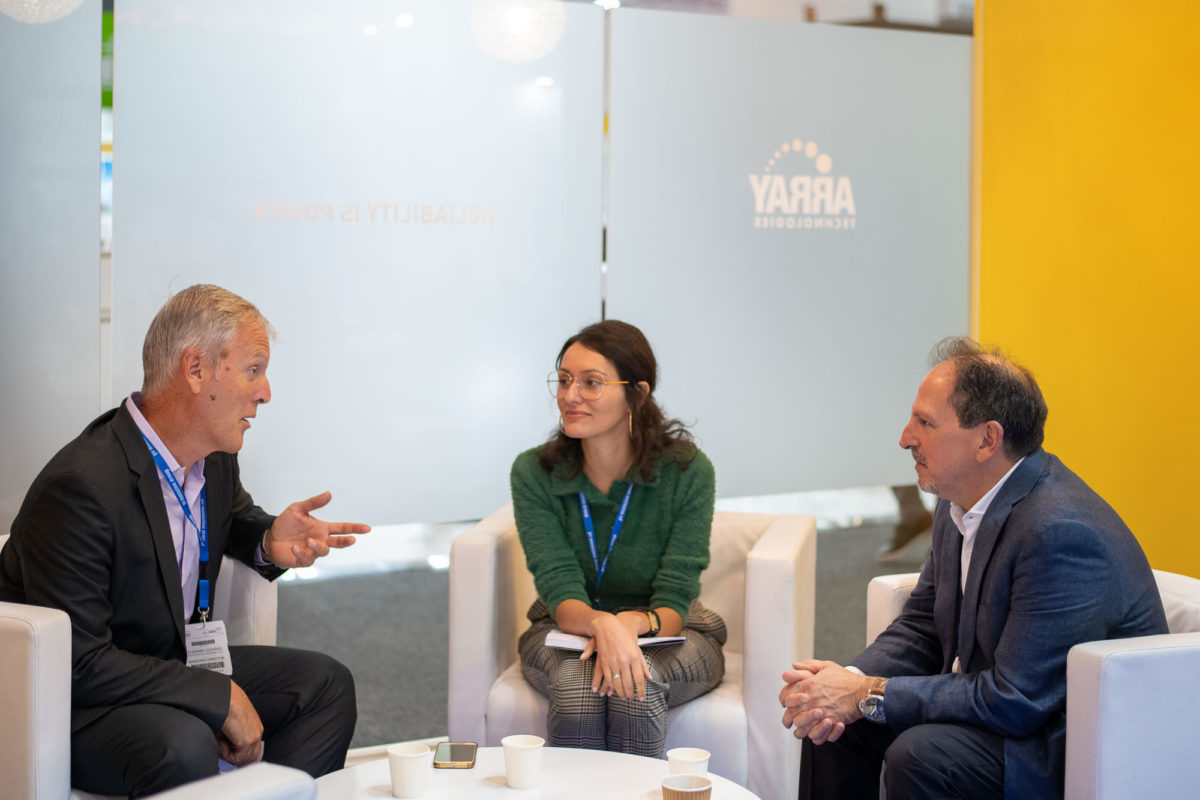pv magazine: Ron, you were recently recognized by S&P Platts as an energy sector pioneer and nominated for the Lifetime Achievement Award. What does that say about PV, and solar tracking’s role in the energy system that you are being recognized alongside the traditional energy industries?
It’s kind of a dream come true, being that I’ve been doing this for almost 30 years and now to see it become mainstream where it is today is phenomenal. It’s a great honor to be nominated, especially because we are a solar company in a rather fossil fuel-dominated industry. I think it’s a sign of the times – demonstrating solar’s grid parity, and the new energy culture or a society that we are transforming into. It’s great to be a part of that and I’m happy that I stuck it out for 30 years to see this happening.
What does it mean to you personally?
It’s rewarding to me to have the honor. It’s nice after all these years to have some validation of your initial beliefs. Some 30 years ago it was a little bit idealistic to believe in solar, but I really had strong commitments to it and felt like that was the right course. To see that turn into reality today and to potentially receive a lifetime achievement award for that, it makes me feel great.
Array was one of the early movers in tracking in the Australian market and gained market share really quickly. However, there is fierce competition from your traditional rivals and also newer players. How do you intend to hold off this challenge?
I think the key is the way we sell our product based on its long-term value. Given that the Australian market is a high labor cost market, our value proposition rings pretty loud and clear here. Our product installs quicker and less expensively than any of our competitors. It operates with zero scheduled maintenance and the O&M costs for unscheduled maintenance is vastly different for our product than for any competitors out there. So, you look at remoteness of sites, you look at the high cost of labor, you look at the reliability difference between the products, and the O&M costs, and I think we are by far the best value for this market.
You are releasing a new software package to optimize tracker performance and presenting it here at the All Energy show. What impact will this have in tracker performance?
As time goes on, everything needs to get a little more efficient and the systems need to get smarter. So, we are here with our new SmarTrack optimization technology. It has a few components to it: one is the optimization of backtracking in the as-built field condition. When one row starts to shade the next, you need to backtrack the rows to keep the shade away, the algorithms we use are based on flat or single-tilted surface.
What SmarTrack does is it monitors the output of the inverter during commissioning and it optimizes the backtracking angle to the sun angle so as to ensure the most optimal and the highest power output positions, after the system is built in the as-built condition, which is the best you can do. So, we are monitoring the actual power output and we are adjusting the tracker accordingly to get the highest possible gain for each block. It’s all about maximizing the power output.
The second component is diffuse light optimization. Some applications in Australia might not be affected by cloud cover, but in south-east U.S., for instance, we have a lot of clouds. So, what SmarTrack does is to monitor the diffused light across the sky and then through machine-learning algorithms adjust the position of the tracker, and another trick on that is knowing when to move the tracker out of that position. So, it’s a learning software.
Thirdly, we’ve been doing a lot of testing around bifacial in laboratories and at our own test sites. We are looking at optimum tracking configurations for types of bifacial modules, trying to understand the LCOE relationship between the tracker design and performance of bifacial modules. It’s going to take a little while to get hard and fast numbers on that.
 Ensuring long term reliable performance has been an attribute of the Array platform that you’ve been highlighting for years. With things like software and optimizing row-by-row performance becoming more importance, is reliability taking a back seat?
Ensuring long term reliable performance has been an attribute of the Array platform that you’ve been highlighting for years. With things like software and optimizing row-by-row performance becoming more importance, is reliability taking a back seat?
I think we’ve got reliability down. Pioneering the U.S. market in introducing moving parts to a system where there were no moving parts before was all about reliability. I also think any time you complicate things more, you can increase or decrease reliability, but when you look at our backtracking optimization program, it is all about defining a lookup table during commissioning. There are no extra components, and there is zero impact to reliability through that.
When you get into diffuse capture, you slightly increase the complexity of the system and you might have some more maintenance to do on the components associated with that, but what you get are the cost benefits. If we are putting a sensor on every row that we are depending upon for performance every day for 30 years, that might be an issue. What we are doing instead is basically moving around the tracker during backtracking, optimizing the inverter output, creating a lookup table that relates sun angle to tracker position during backtracking and then going with that for the next 30 years.
You’ve passed the 1 GW milestone in Australia. What does 2019 have in store?
It looks great for us moving forward, but as far as what delays might occur with interconnections and so forth, we will have to see.
On that note, we’ve seen some delays to final AEMO acceptance affecting some project developers and EPCs. Has this impacted you at Array, as a key component supplier?
Not yet. We have not seen delays because of that. I think that the process is getting more complicated. There are a lot of people that are looking for interconnection agreements, but the studies have to be done and more people are being added to the studies, so I think the complication is now probably defining the speed that these systems can go in.
There is a lot of policy uncertainty beyond 2020 in the Australian large-scale market. Will you continue to invest in the market?
Absolutely. I believe we are now at an initial stage of solar, which is producing energy when the sun shines, but solar power plants and wind will continue to evolve and provide greater services to the grid, such as frequency regulation; which is already happening. Baseload generation is still the Holy Grail for renewables, and I think we are on our way there. It’s just a matter of time.
I’ve always believed that this is the megatrend of energy for the next 50 years. I don’t think that burning coal is the future of energy and I don’t see us going any other way given all the issues we have with climate change. When we hit the point when we cannot penetrate the grid anymore only with solar, I think we will do solar with storage, but the solar train has already left the station.
This content is protected by copyright and may not be reused. If you want to cooperate with us and would like to reuse some of our content, please contact: editors@pv-magazine.com.









By submitting this form you agree to pv magazine using your data for the purposes of publishing your comment.
Your personal data will only be disclosed or otherwise transmitted to third parties for the purposes of spam filtering or if this is necessary for technical maintenance of the website. Any other transfer to third parties will not take place unless this is justified on the basis of applicable data protection regulations or if pv magazine is legally obliged to do so.
You may revoke this consent at any time with effect for the future, in which case your personal data will be deleted immediately. Otherwise, your data will be deleted if pv magazine has processed your request or the purpose of data storage is fulfilled.
Further information on data privacy can be found in our Data Protection Policy.